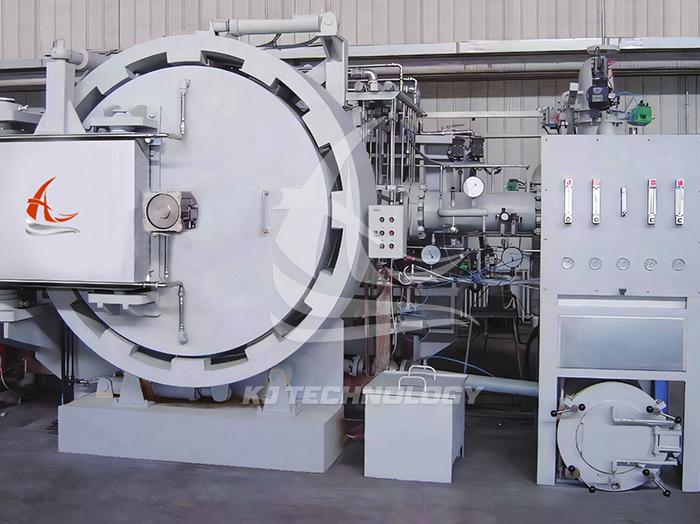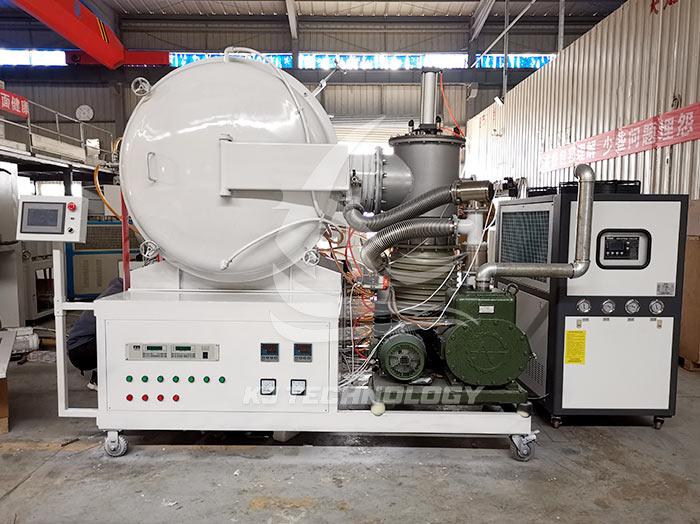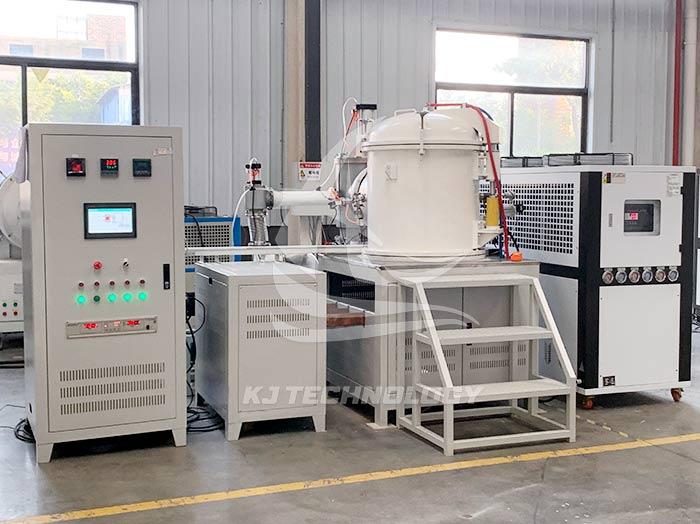What are the applications of high vacuum electric furnaces in?
 11-04-2025 Author: KJ technology
11-04-2025 Author: KJ technology
High vacuum electric furnaces play a key role in multiple high-tech and precision manufacturing fields due to their high vacuum environment and precise temperature control capabilities. Specific application areas are as follows:
1. Materials Science and Engineering
New material preparation: In the research and development of nanomaterials, superconducting materials, optoelectronic materials, and magnetic materials, high vacuum electric furnaces provide an oxygen free environment to promote material formation and growth while ensuring purity. For example, when synthesizing carbon nanotubes, quantum dots, and oxide films, a vacuum environment can avoid oxidation pollution and improve material properties.
Sintering of ceramics and hard alloys: Vacuum environment helps to eliminate impurity gases and obtain purer and denser products. For example, after sintering, the hardness and wear resistance of hard alloys are significantly improved, and the density of ceramic materials is higher.
Metal heat treatment: reduces oxidation and decarburization of metal components, improves mechanical properties and corrosion resistance. For example, after vacuum heat treatment, the creep resistance of titanium alloy blades is improved.
2. Semiconductor and Electronics Industry
Crystal growth and epitaxy: In the growth of semiconductor materials such as silicon single crystals, silicon carbide (SiC), and gallium nitride (GaN), vacuum environment can reduce impurity doping and improve crystal quality. For example, SiC epitaxial wafers are used to manufacture high-efficiency power devices.
Integrated circuit packaging and testing: Vacuum environment reduces pollution and improves product reliability. For example, the diffusion, oxidation, and integrated circuit packaging processes of silicon wafers all rely on vacuum furnaces to achieve high-purity processing.
Electronic component manufacturing: used for soldering and conductive connections, such as integrated circuits, transistors, etc. Vacuum brazing technology can achieve seamless connection of high-precision microelectronic devices, avoiding poor contact caused by oxidation.
3. Metallurgy and Metal Processing
Vacuum smelting: By removing gases and impurities from metals, purity and performance are improved. For example, the purification of high-purity metals such as titanium and niobium relies on a high vacuum environment, and the degassing process of electronic devices also requires the support of a vacuum furnace.
Powder metallurgy: Vacuum sintering process can produce hard alloy parts with a density of up to 99%, such as cutting tools, molds, etc. The vacuum environment promotes the bonding between powder particles and enhances material strength.
Metal melting and casting: Melting metals under vacuum to avoid oxidation and bubble formation. For example, the turbine blades of aircraft engines use vacuum melting technology to ensure material uniformity and high temperature resistance.
4. Chemical and Petrochemical Industry
Special environmental reactions: reactions carried out in high temperature, high pressure, and corrosive environments can be achieved through the sealing and corrosion resistance of vacuum furnaces. For example, the drying, activation, and regeneration processes of catalysts need to be completed under vacuum to improve catalyst efficiency and lifespan.
Catalyst treatment: Vacuum furnace is used for catalyst pretreatment and regeneration, removing surface pollutants and restoring activity. For example, precious metal catalysts in the petrochemical industry have significantly improved catalytic efficiency after vacuum treatment.
5. Aerospace and high-end manufacturing
High performance material manufacturing: used to manufacture materials that are resistant to high temperatures, corrosion, and lightweight, such as high-temperature alloys, ceramic based composite materials, etc. For example, after vacuum solution aging treatment, the creep resistance of aircraft engine turbine blades is significantly improved.
Special component treatment: Heat treatment of engine or structural components under vacuum to enhance performance. For example, materials for spacecraft thermal protection systems need to be vacuum sintered to ensure stability at extreme temperatures.
6. In the field of new energy
Lithium battery material processing: Vacuum heat treatment of positive electrode materials (such as lithium cobalt oxide and lithium iron phosphate) to optimize lattice structure, enhance battery capacity and cycle life. For example, after vacuum treatment, the battery capacity is increased and the cycle life is extended.
Hydrogen storage and transportation materials: Prepare hydrogen storage alloys (such as LaNi ₅), improve their hydrogen absorption performance through vacuum melting and heat treatment, and promote the development of hydrogen storage and transportation technology.
7. Biomedical field
Surface modification of medical implants: vacuum coating technology (such as hydroxyapatite HA coating) is used to enhance the biocompatibility and antibacterial performance of implants. For example, after vacuum coating treatment on the surface of artificial joints, they bond more tightly with bone tissue and reduce rejection reactions.
Biosensor manufacturing: Deposition of sensitive thin films under vacuum to improve the sensitivity of sensors for detecting specific gases or biomolecules. For example, the glucose sensor adopts vacuum coating technology, which significantly improves the detection accuracy.
8. Research and experimental fields
Basic scientific research: used for the exploration of new materials, catalytic reaction research, and simulation experiments in Earth and planetary science. For example, simulating the internal environment of planets under high temperature and pressure, studying the behavior of materials under extreme conditions.
High temperature and high pressure experiment: Study the phase transition, chemical reactions, and physical properties of substances under vacuum. For example, by simulating the material changes and reactions under various extreme environments through vacuum furnace experimental conditions, important data can be provided for scientific research.








